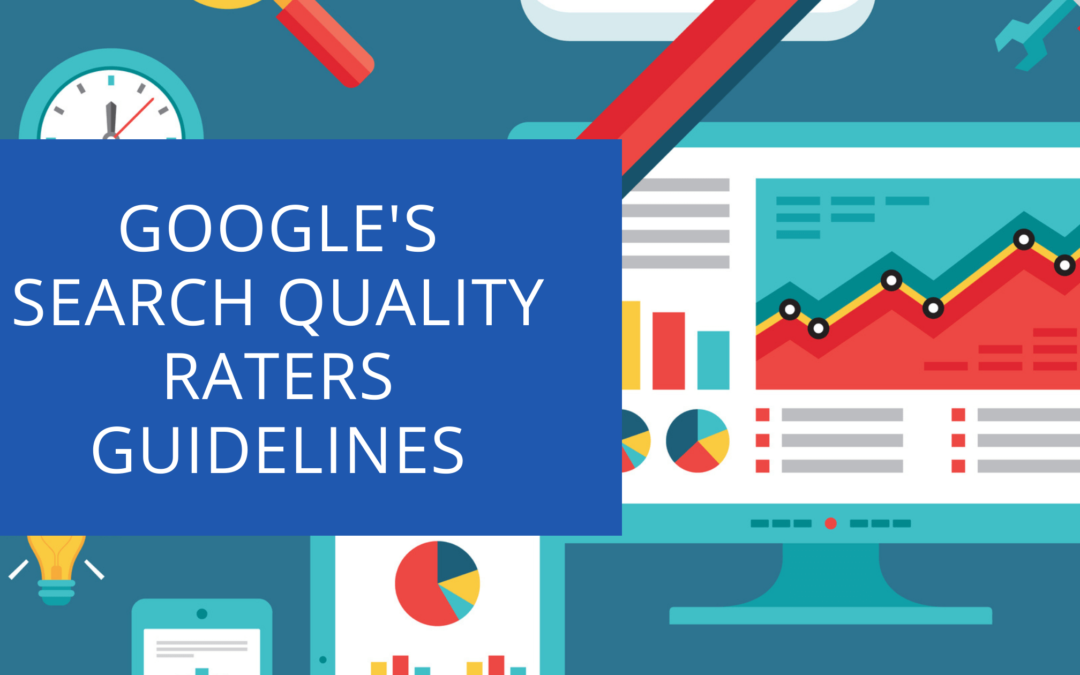Google’s search quality raters guidelines are a set of instructions used to help Google evaluate the quality of their search results. These guidelines help Google to determine which websites are the most relevant and useful for their users.
Contents
What are Google’s Search Quality Raters Guidelines?
Google’s Search Quality Raters Guidelines are a set of guidelines used by Google’s search quality raters to help them evaluate the quality of search results. The guidelines are designed to help raters identify low-quality content and spam, and to help Google improve the quality of its search results. The guidelines are not binding, and Google may not always follow them, but they provide a good indication of the types of content that Google considers to be low quality.
What is the Purpose of Google’s Search Quality Raters Guidelines?
The purpose of the Google’s Search Quality Raters Guidelines is to provide information to the raters about what is important when rating the quality of a search result. The guidelines provide information on the types of pages that should be rated as high quality, medium quality, or low quality. They also provide information on the types of queries that should be rated as high quality, medium quality, or low quality.
What is the Role of a Search Quality Rater?
Search quality raters are employed by search engine companies to evaluate the quality of search results. They are responsible for rating the relevance and usefulness of search results in response to specific queries. This helps the search engine company to improve the quality of their search results.
What are the Raters Looking For?
 The Google Search Quality Raters Guidelines are a set of guidelines used by Google to help their search quality raters assess the quality of search results. The guidelines are used to help determine whether a result is a good match for a user’s query, and to help determine the level of quality for each result. The guidelines are also used to help determine the level of expertise and authoritativeness of a source.
The Google Search Quality Raters Guidelines are a set of guidelines used by Google to help their search quality raters assess the quality of search results. The guidelines are used to help determine whether a result is a good match for a user’s query, and to help determine the level of quality for each result. The guidelines are also used to help determine the level of expertise and authoritativeness of a source.
What is E-A-T in Google Search Quality Raters Guidelines?
E-A-T is an acronym for “Expertise, Authoritativeness, and Trustworthiness.” These are the three main factors that Google looks at when determining the quality of a website. A website with high E-A-T is considered to be a reliable source of information.
Expertise
Expertise in E-A-T is determined by a rater’s level of knowledge in the topic they are rating. The Google Search Quality Raters Guidelines state that raters should be familiar with the topics they are rating, in order to properly assess the Expertise, Authoritativeness, and Trustworthiness of a website.
Authoritativeness
Authoritativeness is one of the key factors that Google uses to determine the quality of its search results. According to the Google Search Quality Raters Guidelines, authoritativeness is “the level of trust that a source inspires in users.” In order to determine whether a source is authoritative, Google looks at a number of factors, including the reputation of the website, the number of links to the website, and the quality of those links.
Trustworthiness
The Google Search Quality Raters Guidelines are a set of guidelines used by Google to help evaluate the quality of their search results. One of the factors that they look at is trustworthiness, which is defined as “the level of trust that a user has in the information provided by a website.” To determine the trustworthiness of a website, Google looks at a number of factors, including the website’s reputation, the quality of its content, and how up-to-date its information is.
What Are Google Search Quality Raters Looking For?
Search quality raters are generally looking to see if a users are needs are being met and the quality of the results.
What is Needs Met?
The question raters would ask themselves is how helpful and/or satisfying the result is for a given query.
What is Page Quality?
Page Quality ratings are based on a number of factors to assess the quality of a page.
What are YMYL sites?
Your Money or Your Life (YMYL) are defined in the guidelines as:
potentially impact a person’s future happiness, health, financial stability, or safety.
Search quality raters are asvised to put more weight on E-A-T.
The categories of YMYL categories are defined in the guidelines as:
- News and current events
- Civics, government, and law
- Finance
- Shopping
- Health and safety
- Groups of people
- Other
Content Sections
According to the guidelines, the sections of a website can be divided into three main categories:
- Main Content (MC): The main content (MC) of a web page is the part that you would expect a user to read and use to make a decision about the page. The MC is the most important part of a web page for users and search engines.
- Supplemental Content (SC): Supplemental content (SC) is defined as content that is not the main content of a page. SC can be used to supplement the main content of a page with additional information, such as definitions, examples, or additional perspectives. SC can also be used to provide additional navigation options on a page.
- Ads: The guidelines provide information on how to rate the quality of ads, as well as the quality of the websites that the ads link to.
How have the Google’s Search Quality Raters Guidelines changed over Time?
 The Google’s Search Quality Raters Guidelines have changed over time to keep up with the ever-changing search engine algorithms. The guidelines were first published in 2013, and have been updated multiple times since then. The most recent update was in October of 2020. The guidelines are designed to help the raters evaluate the quality of search results, and provide feedback to the Google team on how they can improve the search engine algorithms.
The Google’s Search Quality Raters Guidelines have changed over time to keep up with the ever-changing search engine algorithms. The guidelines were first published in 2013, and have been updated multiple times since then. The most recent update was in October of 2020. The guidelines are designed to help the raters evaluate the quality of search results, and provide feedback to the Google team on how they can improve the search engine algorithms.
Is E-A-T a ranking factor?
E-A-T and EAT have been mentioned by Google in various presentations or articles, but they are not official ranking factors. That doesn’t mean they don’t affect your rankings though!
It might not be an official ranking factor, but the techniques that go into improving your E-A-T factors cross over into what you need to implement for a successful SEO strategy.
While improving your E-A-T, you improve your SEO, resulting in higher rankings and traffic.
Google’s Search Quality Raters Guidelines FAQ
What is the purpose of the Search Quality Raters Guidelines?
The purpose of the Search Quality Raters Guidelines is to provide information to Google Search Quality Raters on how to assess the quality of web search results.
What’s the difference between the Search Quality Raters Guidelines and the Google Webmaster Guidelines?
The Search Quality Raters Guidelines are designed to help Google Search Quality Raters assess the quality of web search results, while the Google Webmaster Guidelines are designed to help webmasters improve the quality of their websites.
What type of feedback do Google’s Search Quality Raters give?
Google’s Search Quality Raters give feedback on the following factors: E-A-T (Expertise, Authoritativeness, and Trustworthiness), relevance, freshness, accuracy, comprehensiveness, and usefulness. They also rate the overall quality of a website.
What is Google doing with all of this feedback?
Google is using the feedback from their Search Quality Raters to improve their search engine algorithms. By improving their algorithms, Google is able to provide the best possible user experience for their users.
Conclusion
Google’s search quality raters guidelines are a set of instructions used to help Google evaluate the quality of their search results. By following these guidelines, businesses can make sure their website is in compliance with Google’s standards and improve their chances of being ranked higher in search results

